Perfect Roasted Beets in Foil: Your Guide to Sweet, Tender, and Effortless Beets
Roasted beets in foil offer the ultimate simple and easy method to transform this vibrant root vegetable with its distinctive earthy flavor into a culinary delight. This technique consistently yields beets that are incredibly tender and moist, making them perfect for incorporating into fresh salads, enriching grain bowls, or simply enjoying on their own with a generous drizzle of your favorite vinaigrette. By mastering this straightforward roasting method at home, you can easily bypass pre-packaged, store-bought options and savor the superior taste and texture of freshly prepared beets.
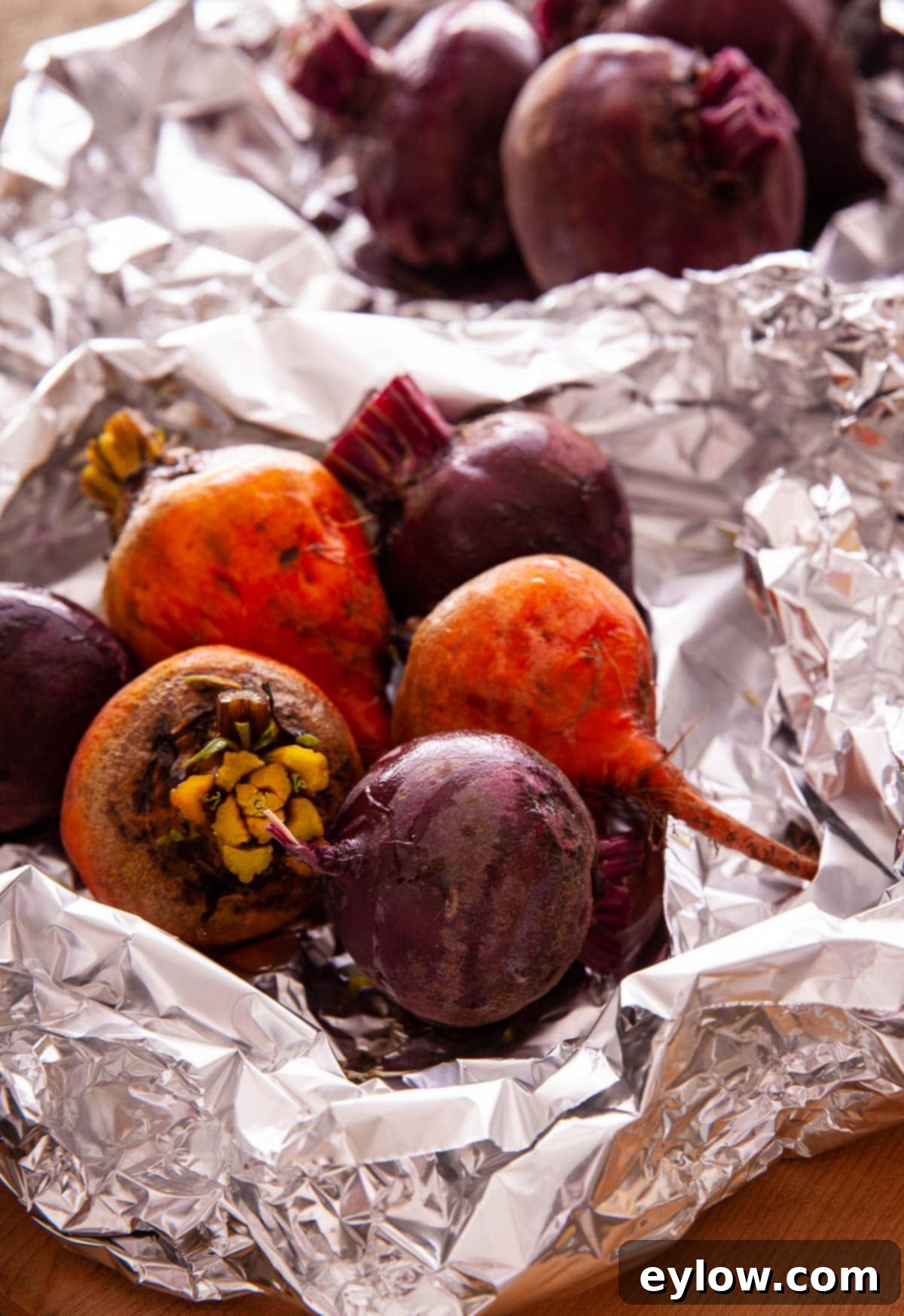
Roasting beets in foil is truly a game-changer, largely because it creates a contained, miniature steam oven right within the aluminum foil packet. This ingenious environment ensures that the beets cook uniformly, tenderizing them beautifully while simultaneously intensifying their natural sweetness and locking in all their precious moisture. The result is a profoundly flavorful beet that’s far superior to boiling or steaming in an open pot. This method is incredibly easy to execute, making it my absolute favorite way to prepare beets. Before you dive in, consider grabbing some disposable kitchen gloves – they’ll be your best friend, saving your hands from the beet’s potent staining power!
Why You’ll Love This Easy Beet Recipe
There are countless reasons why roasting beets in foil will quickly become your go-to method for preparing this nutritious root vegetable:
- Effortless Cooking Method: This technique requires minimal hands-on time, allowing the oven to do most of the work. Once wrapped, you simply set them to roast, freeing you up to prepare other components of your meal. It’s a truly stress-free way to cook.
- Superior Freshness and Flavor: Unlike the often bland and watery pre-cooked, packaged beets found in stores, homemade roasted beets boast a rich, earthy flavor and a naturally sweet intensity. The foil method concentrates these flavors, delivering a product that’s vibrant and fresh.
- Remarkably Simple: With just a few basic ingredients – beets, a touch of oil, salt, and pepper – and straightforward steps, even novice cooks can achieve perfect results. There’s no complicated technique involved, just pure, wholesome deliciousness.
- Intensified Natural Sweetness: The slow roasting process caramelizes the natural sugars in the beets, bringing out an incredible sweetness that’s often lost in other cooking methods. This makes them appealing even to those who might typically shy away from beets.
- Easy Cleanup: The foil packet traps all the beet juices, preventing them from leaking onto your baking sheet. This means no scrubbing sticky, stained pans, just a simple toss of the foil when you’re done.
- Incredibly Versatile: Once roasted, these tender beets can be transformed into a myriad of dishes. Enjoy them warm or cold, diced into salads, blended into smoothies, or served as a elegant side dish. Their vibrant color and unique flavor elevate any meal.
Serve these beautifully roasted beets alongside a hearty roast chicken breasts with cashew gravy, a pan-seared steak, or even as a vibrant addition to a vegetarian platter for a complimentary and nutritious side dish.
Essential Recipe Ingredients

The beauty of this recipe lies in its simplicity, requiring just a few high-quality ingredients to achieve outstanding flavor.
- Beets: Start with fresh, raw beets of any color you prefer – red, golden, or even the striking candy-striped Chioggia variety. Each offers a slightly different visual appeal and a subtle nuance in flavor. The absolute best beets are those with their leafy green tops still attached, as this often indicates superior freshness, more moisture, and richer flavor compared to beets with trimmed tops. When selecting, aim for medium-sized beets that are roughly the same size. This consistency is key for ensuring they all roast evenly and are perfectly tender at the same time. Inspect them for firm roots and bright, vibrant colors.
- Oil: A good quality oil helps the beets caramelize slightly and keeps them moist. My top choices include extra virgin olive oil for its rich flavor, avocado oil for its high smoke point and neutral taste, or any other healthy neutral oil. I recommend avoiding common vegetable oils which often lack flavor and robust health benefits. The oil will coat the beets, aiding in the roasting process and contributing to their luscious texture.
- Salt and Pepper: These humble seasonings are crucial for enhancing the beets’ natural sweetness and rounding out their earthy notes. A generous sprinkle of salt helps draw out moisture, while freshly ground black pepper adds a subtle warmth. Adjust quantities to your personal taste.
For precise measurements, please refer to the comprehensive recipe card below. You’ll find detailed quantities for beets, oil, and suggested amounts of salt and pepper to ensure your roasted beets are perfectly seasoned.
Chef’s Tips for Perfect Roasted Beets: Roasting beets in foil is not only about flavor; it’s also about convenience. The foil acts as a protective barrier, preventing the vibrant beet juices from leaking onto your baking sheet. This thoughtful step makes cleanup significantly easier, transforming what could be a messy task into a breeze. Additionally, understanding the timing for roasting beets is crucial for optimal tenderness. Remember that larger beets will naturally take longer to cook through than smaller ones, so try to select beets of a similar size to ensure even cooking. If you have a mix, you may need to check the smaller ones earlier and remove them from the oven while the larger ones continue to roast.
Consider incorporating these versatile roasted beets in foil into a delightful kale and roast vegetable salad for a hearty and nutritious meal, or elevate your side dish game by making a vibrant beet salad with creamy feta cheese. The possibilities are truly endless!
Simple Step-by-Step Instructions
Achieving perfectly tender and sweet roasted beets is incredibly straightforward with this foil roasting method. Follow these easy steps:
- Prepare Your Beets: Begin by preheating your oven to a steady 400°F (200°C). This ensures the oven is at the correct temperature for even roasting. Next, prepare your beets: trim off the leafy green tops, leaving about one inch of the stem attached. This helps prevent nutrient loss and excessive bleeding of color during roasting. Thoroughly scrub the beets clean under cold running water, using a vegetable brush to remove any dirt or debris. Discard the beet greens, or if you’re feeling adventurous, save them for sautéing later – they are delicious!
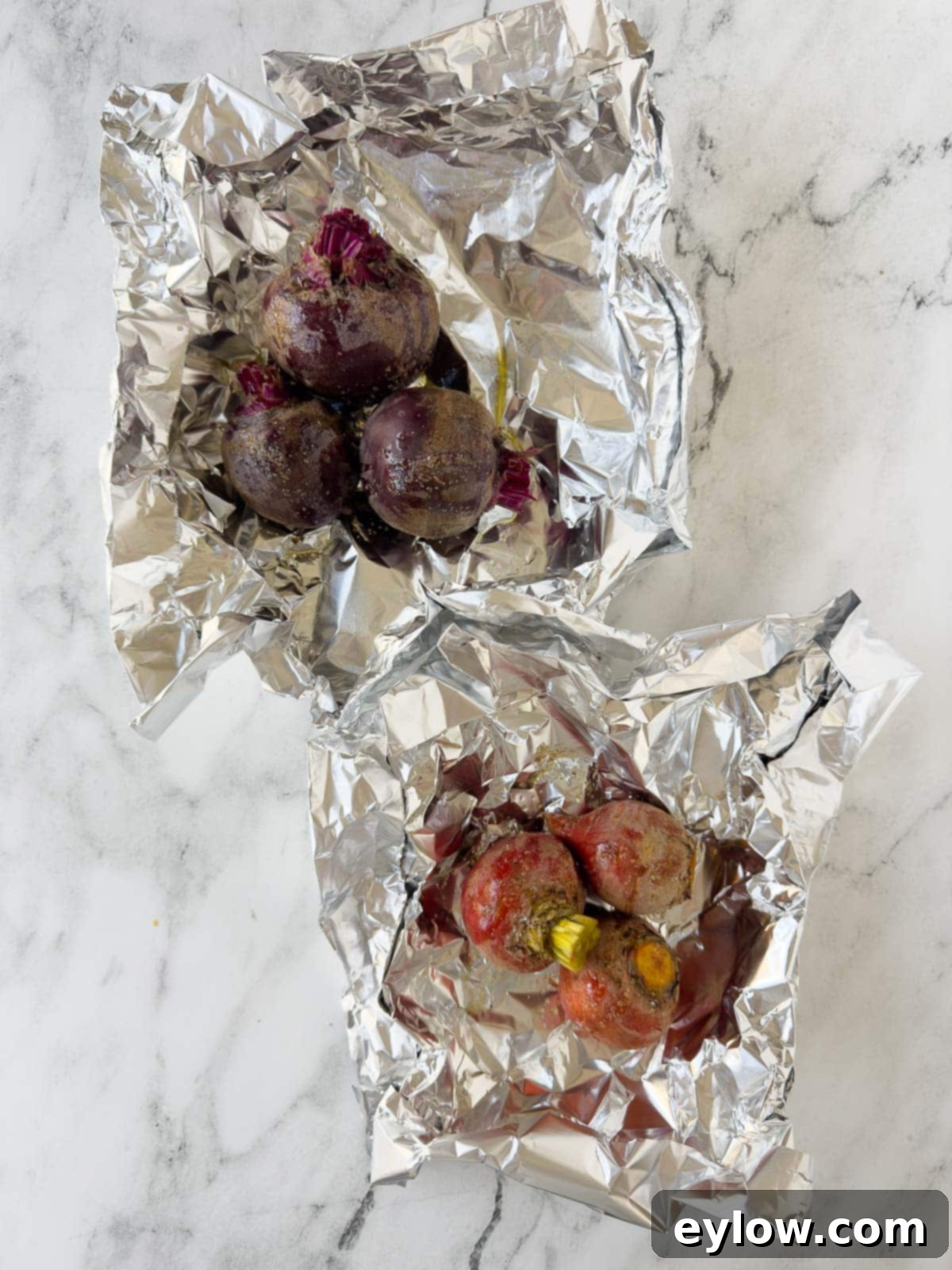
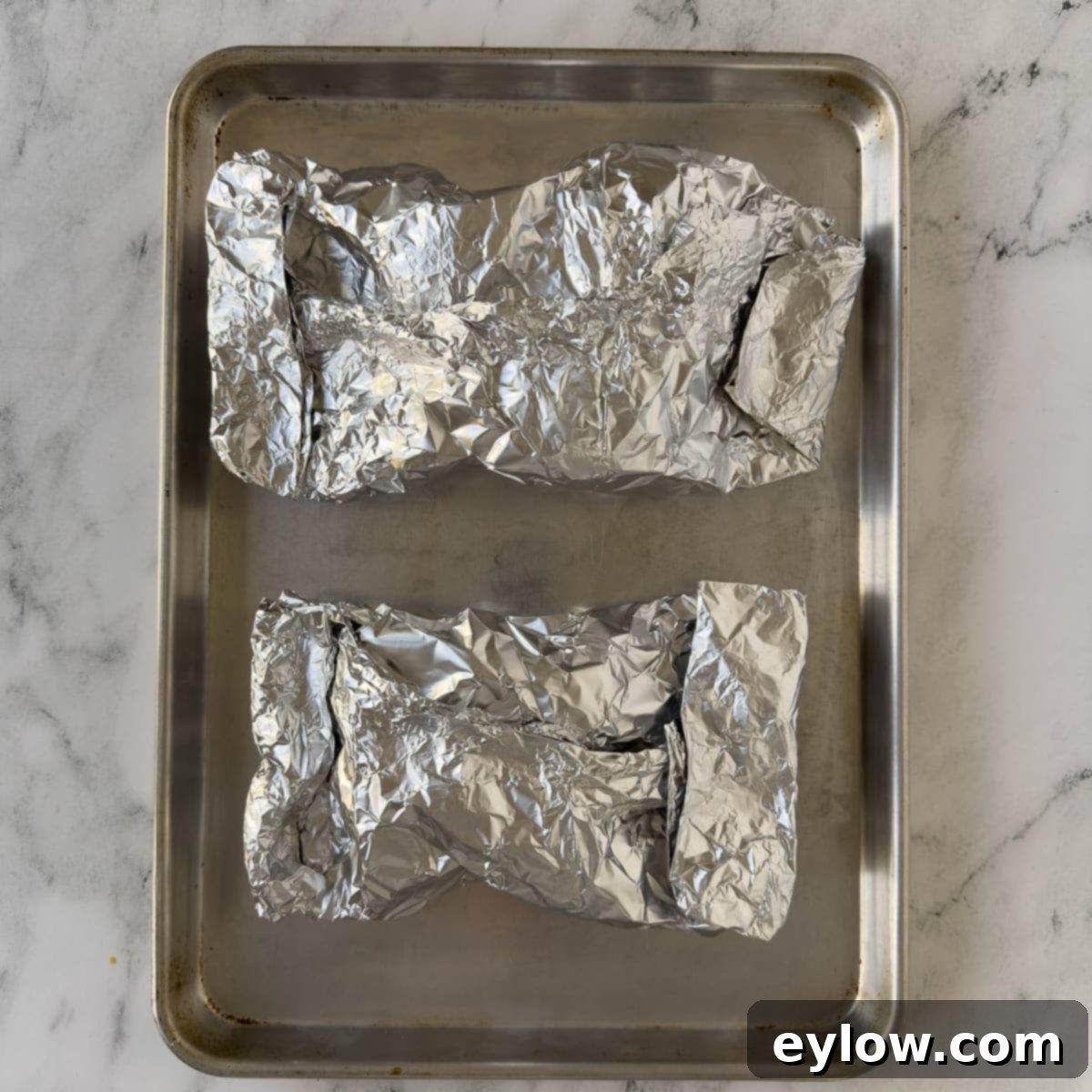


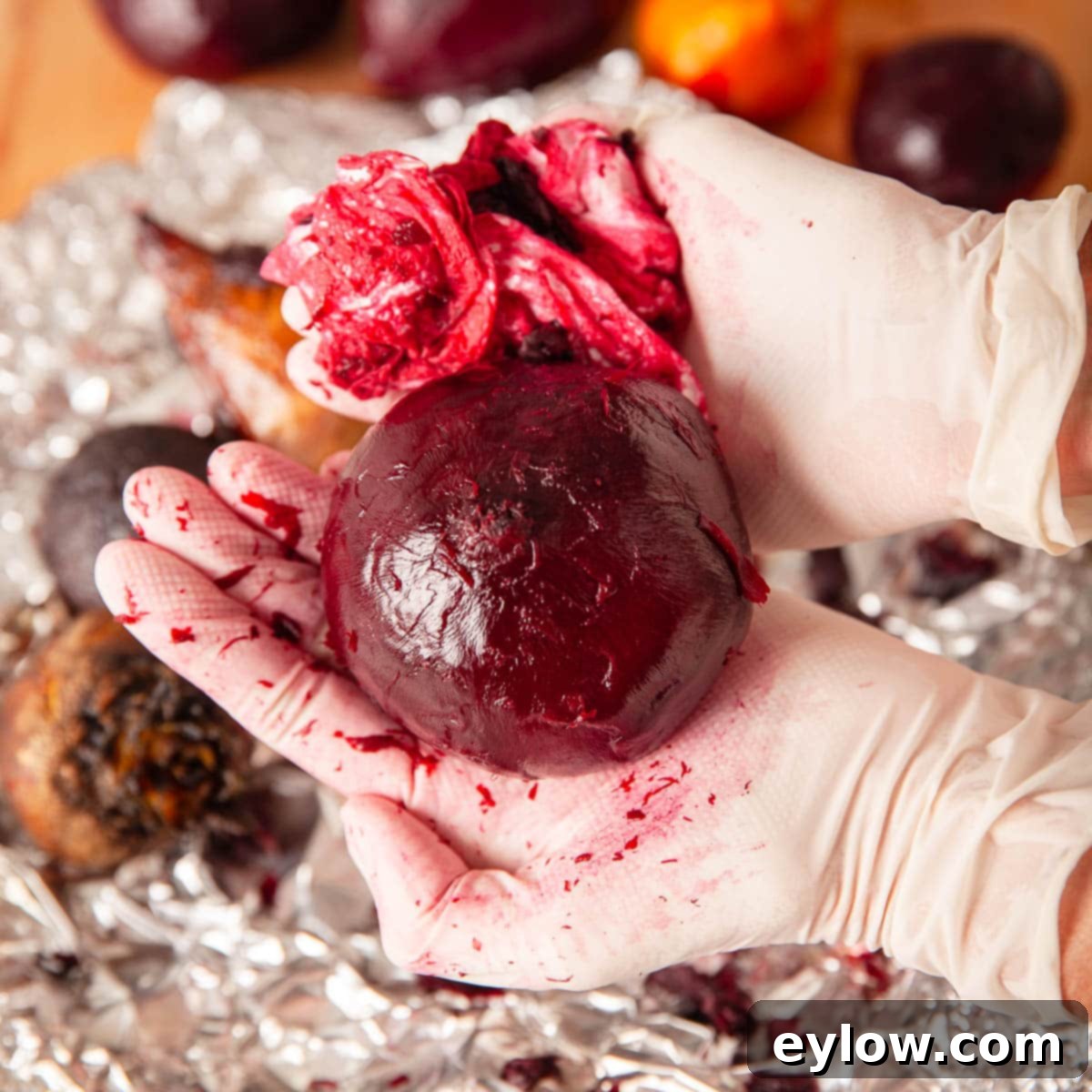
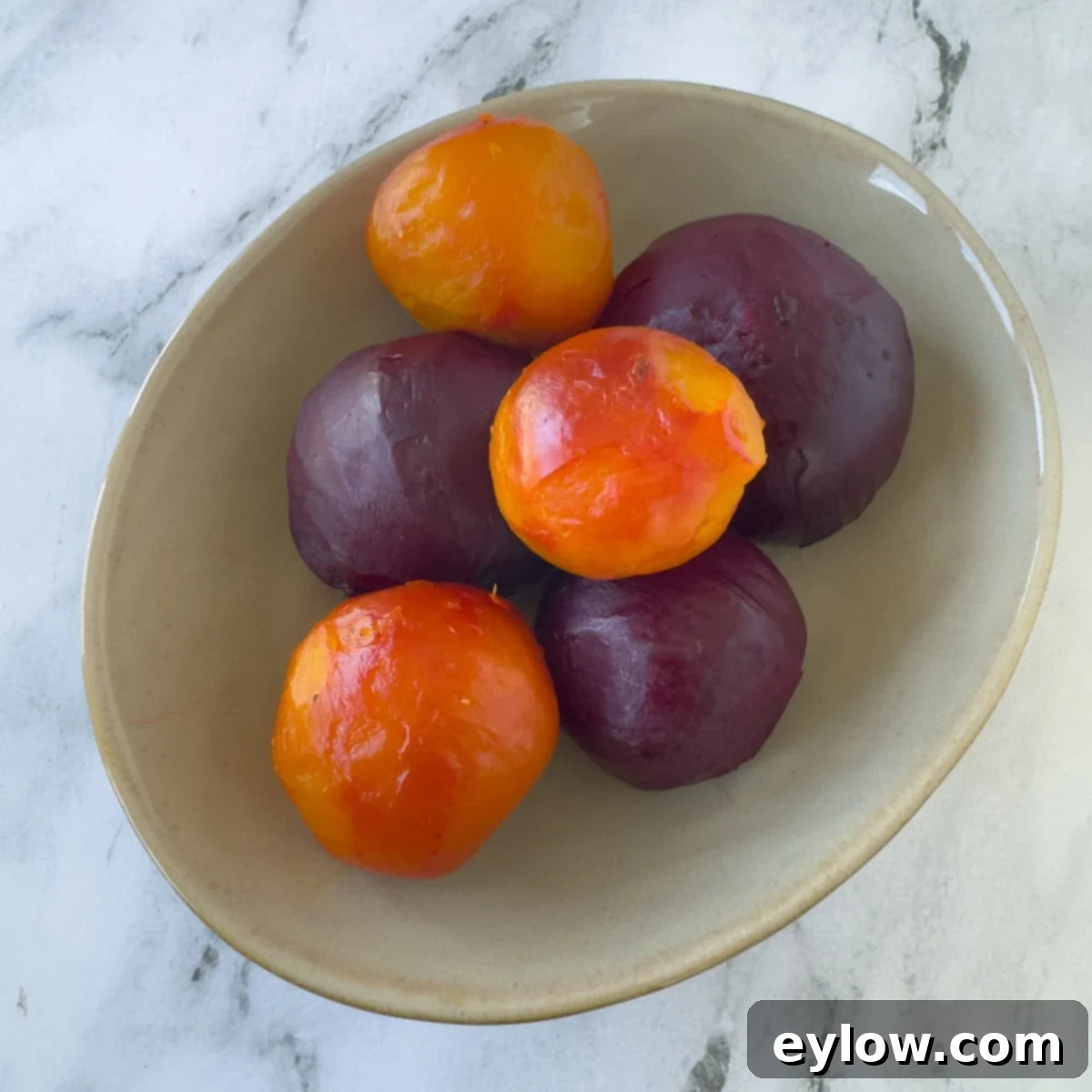
How to Easily Peel Roasted Beets
One of the best advantages of roasting beets in foil is how effortlessly their skins come off once cooked. The steam trapped in the foil works wonders to loosen them. While the beets are still warm (but cool enough to handle), you’ll find peeling them to be a quick and easy task. Here are the three most effective methods:
- Rubbing with Paper Towels: This is arguably the easiest and most satisfying method. Once the beets have cooled slightly, simply grab a piece of paper towel and gently rub the skin. It should practically slough off, leaving behind a smooth, vibrant beet. This works particularly well for smaller beets and thinner skins.
- Using a Vegetable Peeler: For slightly larger or tougher-skinned beets, a good quality vegetable peeler is your friend. I personally find that inexpensive Y-peelers tend to do the best job, conforming to the beet’s shape and effortlessly removing the skin. Hold the beet firmly and peel downwards, being careful to avoid staining your countertop.
- Scraping with a Sharp Paring Knife: If you don’t have a peeler or prefer a more precise approach, a small, sharp paring knife can be used to scrape away the loosened skin. Hold the beet firmly and use gentle, outward strokes. This method gives you excellent control, especially around any nooks and crannies.
A note on beet stains: Beets are notorious for their high staining power, and their vibrant pigments can quickly color anything they touch – hands, cutting boards, and clothing. To prevent unwanted pink fingers and kitchen messes, it’s highly advisable to wear a full-cover apron (preferably not a white one!) and keep a stack of paper towels readily available for quick cleanups. Your best defense against staining your hands is a box of disposable food handler gloves. They are an absolute game-changer when working with beets, raw ground meat, or any other high-stain foods, making them a versatile and invaluable tool in any kitchen.
Chef’s Tip on Cutting Boards: While many cooks favor plastic cutting boards for their lightweight nature and dishwasher-friendliness, they can unfortunately absorb the pigments from high-stain foods like beets, leading to permanent discoloration. For beet preparation, I highly recommend using cutting boards that are less prone to staining. Personally, I use these incredible black Richlite cutting boards. They are not only resistant to staining but also come in a variety of convenient sizes (including custom options), are incredibly durable, easy to handle, and most importantly, they are knife-friendly, keeping your blades sharp. A wooden cutting board also works well, but be prepared for some subtle discoloration over time.
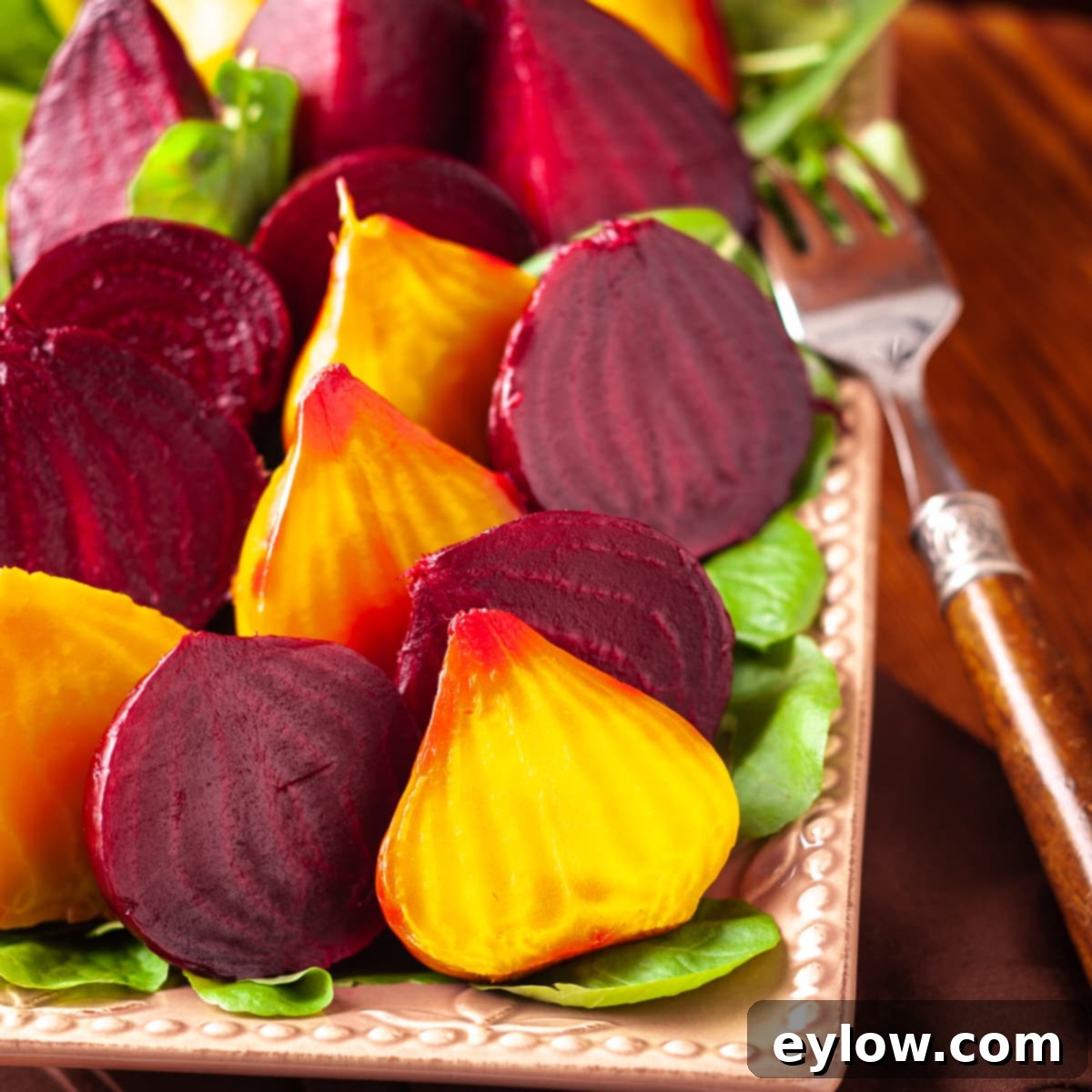
Creative Serving Ideas for Roasted Beets
Once your beets are perfectly roasted and peeled, their culinary journey has just begun! Their sweet, earthy flavor and vibrant color make them a fantastic addition to a wide array of dishes. Here are some inspiring serving ideas to get your creativity flowing:
- Elevate Your Salads: Diced or sliced roasted beets are a natural fit for any green salad. They pair exceptionally well with creamy goat cheese or tangy feta cheese, adding a delightful contrast of flavors and textures. For an extra touch, toss in some toasted walnuts or pecans and a sprinkle of fresh dill or mint.
- Simple, Elegant Side Dish: Sometimes, the best way to enjoy roasted beets is in their purest form. Serve them as a straightforward side dish, dressed simply with a drizzle of high-quality extra virgin olive oil, a splash of your favorite balsamic vinegar, and a scattering of fresh herbs like chopped chives, fresh parsley, or vibrant fresh dill.
- Toss with a Zesty Vinaigrette: Whisk up a classic French vinaigrette, perhaps with a little Dijon mustard for an extra kick. The mustard’s subtle spice is a great addition that complements the beets’ sweetness beautifully. This is a fantastic way to prepare them for a picnic or potluck.
- Unexpected Smoothie Booster: Don’t knock it till you try it! Swap a banana for a roasted beet in your favorite raspberry smoothie. The beet adds a beautiful color, a boost of nutrients, and a subtle sweetness. A little extra sweetener might be needed, but it’s a delicious and surprisingly harmonious combination.
- Hearty Grain Bowls: Build a wholesome and satisfying grain bowl by adding cubed roasted beets to a base of quinoa, farro, brown rice, or couscous. Combine them with other roasted vegetables, a protein source (like grilled chicken or chickpeas), and a creamy dressing for a complete meal.
- Quick Appetizer: Cube the beets and serve them with a dollop of labneh or Greek yogurt, a sprinkle of za’atar, and a drizzle of olive oil for an elegant appetizer.
- Warm Side with Main Courses: Serve them warm alongside roasted chicken, grilled pork chops, or pan-seared steak for a colorful and nutritious accompaniment that stands out.
For another fantastic salad idea utilizing these delicious roasted beets, be sure to check out my popular kale salad with roast vegetables, where their earthy sweetness truly shines.
Storage Tips for Cooked Beets
Proper storage ensures your delicious roasted beets stay fresh and flavorful for days to come. Once the beets have completely cooled, cut them into quarters, slices, or smaller cubes depending on how you plan to use them. Transfer the cooled, cut beets to an airtight container and refrigerate for up to 4-5 days. It is highly recommended to use glass containers rather than plastic. As mentioned, beets have a high staining power, and their vibrant pigments can permanently discolor plastic containers, making them difficult or impossible to clean thoroughly.
Roasted Beets FAQs
No, there’s absolutely no need to peel beets before roasting them. In fact, it’s often better not to! Simply trim the top leaves and stems, leaving about 1 inch of the stem attached. Then, use a produce wash or a vegetable brush to scrub them clean under cold water and pat them dry. Roasting beets in foil is a fantastic method because the enclosed steam helps to loosen the skins significantly, making them incredibly easy to remove after roasting. This saves you time and effort on the front end and makes for a much smoother peeling process.
Yes, roasted beets are exceptionally healthy! Beets are a nutritional powerhouse, packed with essential vitamins and minerals. They are an excellent source of folate, which is crucial for cell growth and function, and magnesium, important for muscle and nerve function. They also provide a significant amount of dietary fiber, promoting digestive health, and potassium, vital for blood pressure regulation. Furthermore, beets are rich in vitamin C, an important antioxidant, and other beneficial minerals. You can typically find the common deep purple-red beets, often golden beets which have a milder flavor, and occasionally the visually striking, red candy-striped Chioggia beets. Beyond their rich nutrient profile, beets are also celebrated as a detoxifying vegetable, supporting liver health and overall well-being.
The roasting time for beets primarily depends on two factors: the size of the beets and your oven temperature. For this recipe, I roast my beets at 400°F (200°C), wrapped snugly in a double layer of aluminum foil with a drizzle of olive oil and sprinkles of salt and ground black pepper. Generally, you can expect medium-sized beets to take approximately 45-60 minutes. Larger beets will naturally require more cooking time, potentially up to 75-90 minutes, while smaller or baby beets will roast a little faster, sometimes in as little as 35-40 minutes. To check for doneness, begin testing at the 45-minute mark. Carefully open the foil packet and pierce one of the largest beets with a thin metal skewer (like a cake tester or a turkey lacer). The skewer should slide through the beet with minimal resistance, indicating it’s tender all the way through. If the beets are not yet tender, reseal the packet and continue roasting for another 10-15 minutes, then re-check until they reach your desired tenderness.
More Delightful Root Vegetable & Side Dish Recipes
Roasted beets in foil are incredibly versatile. Add them to vibrant salads for a burst of color and flavor, or simply dress them with a homemade balsamic glaze and serve as a sophisticated side dish alongside your favorite roasted chicken, tender pork tenderloin, or perfectly seared steak. Explore more recipes that pair wonderfully with these delicious beets:
- Hawaiian Salad With Goat Cheese
- Roasted Vegetable Salad with Kale
- Roast Split Chicken Breast
- Sour Cream Pork Chops Recipe
⭐️Did You Make This Recipe?
If you’ve tried your hand at making these delicious roasted beets in foil, I’d absolutely love to hear about your experience! Please take a moment to add your comment and share your feedback below. Your thoughts and insights are incredibly valuable to me and other readers. And if you loved this recipe as much as I do, please consider giving it a 5-star rating! Your ratings truly help others discover and enjoy these wonderful recipes.
📖 Recipe

Roasted Beets in Foil
Sally Cameron
Pin Recipe
Equipment
-
Foil for roasting
-
Rimmed baking sheet
-
Disposable kitchen gloves
-
Thin metal skewer or cake tester
Ingredients
- 1 ½ – 2 pounds raw beets with tops about 5 medium beets
- 2 teaspoons olive oil
- salt to taste
Instructions
-
Pre-heat oven to 400 degrees. Trim off the beet leaves and stems to within 1-inch of the beet. Scrub beets under cold water and dry them with paper towels.
-
Place a double thickness of heavy aluminum foil on the counter, large enough to hold the beets. Place beets in the center, drizzle with oil and a sprinkle of salt and wrap tightly into a foil packet.
Place packet in the oven and roast until beets are cooked through and tender. Use a thin metal skewer (like a turkey lacer or pins) or a metal cake tester. They should easily pierce through the beets when ready.Test beets at 45 minutes. Continue about 15 minutes longer if needed. Timing will depend on the size of the beets.
-
Remove beet packet from the oven and cool a few minutes. Slice off the top where the stem was. When beets are cool enough to handle, unwrap and peel one of three ways: rub off with paper towels, use a y-vegetable peeler, or a sharp paring knife. Be sure to wear disposable gloves.
Beets are ready to eat or add to a salad or other recipe. Beets will last 4-5 days, covered, in the refrigerator.
Notes
To serve beets as a side dish, sprinkle with chopped chives and drizzle with olive oil, salt and pepper.
